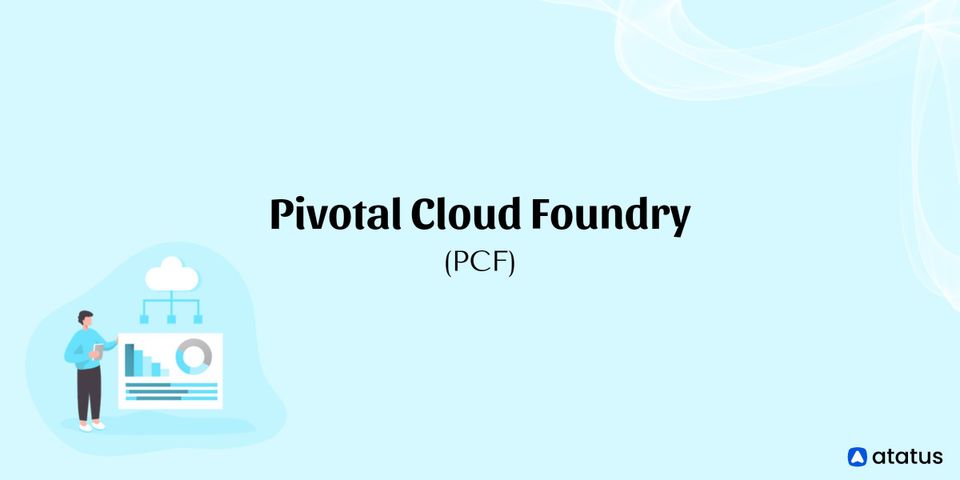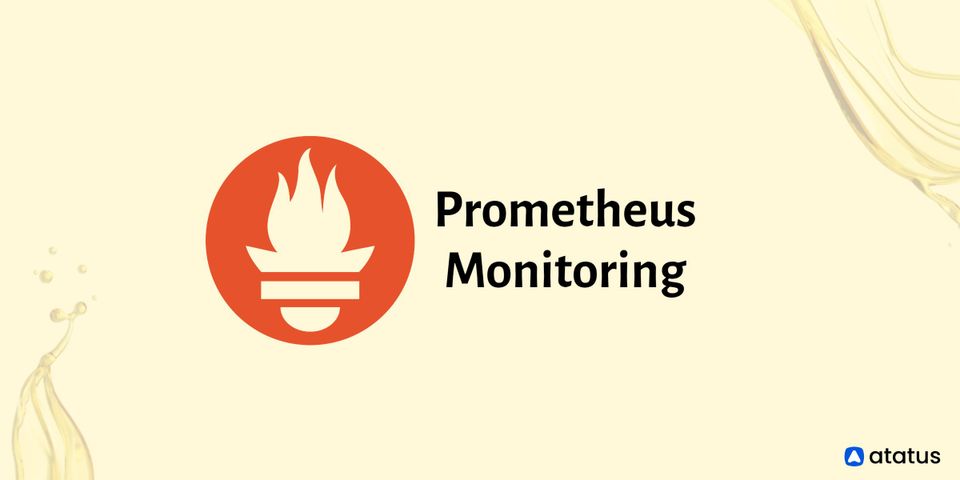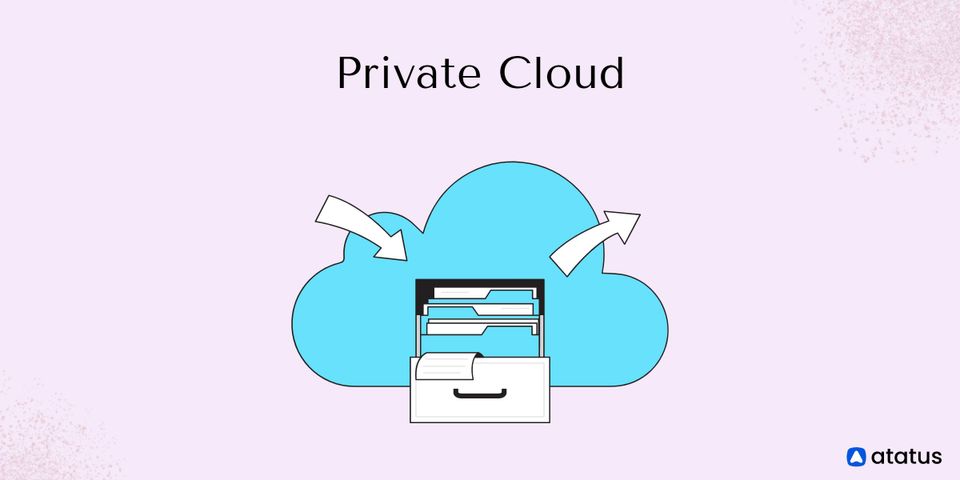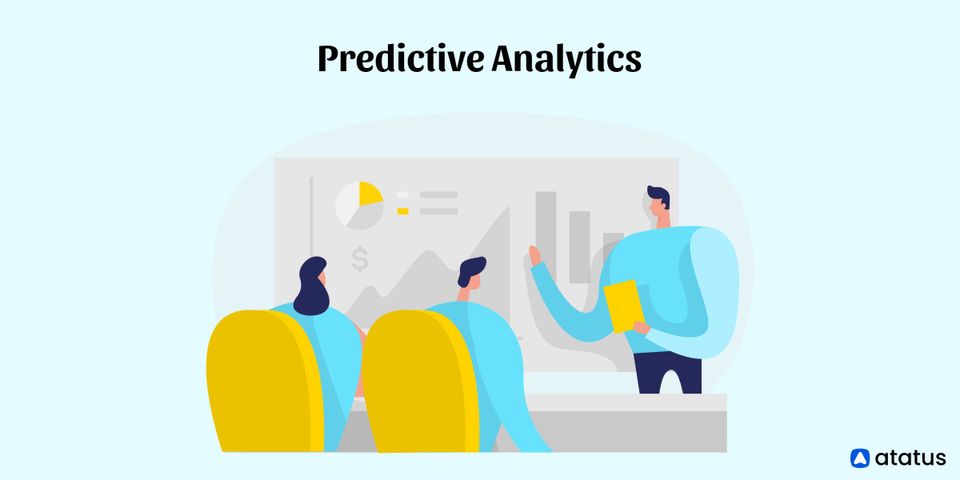Pivotal Cloud Foundry was created to make development even easier as more enterprises shift to the cloud, from Platform-as-a-Service (PaaS) for streamlined development to Infrastructure-as-a-Service (IaaS) for simpler cloud computing infrastructure.
Enterprises are evolving toward more automated IT operations, where IT resource maintenance and management are handled automatically. Mega cloud providers like Amazon, Google, Microsoft, and IBM are profiting from business architects' mindset at a higher cost. Customers will be locked-in to a specific set of technologies and runtimes in these mega clouds, limiting the agility of your enterprise's overall solutions architecture.
We will go over the following:
- What is Cloud Foundry?
- What is Pivotal Cloud Foundry (PCF)?
- Pivotal Cloud Foundry Architecture
- Components of Pivotal Cloud Foundry
- Benefits of Pivotal Cloud Foundry
What is Cloud Foundry?
Cloud Foundry (or CF) is an open-source cloud computing platform that focuses on the user experience of developers. It focuses on streamlining the development workflow from development to testing to production while also helping in the automation of these processes.
Developers can focus on designing new cloud-native applications instead of worrying about infrastructure with Cloud Foundry. Once an application is ready for deployment, Cloud Foundry employs build packs to automate all building and deploying procedures for applications in a variety of languages and platforms.
The deployed application is then launched as a container and scheduled within one of Cloud Foundry's VMs using Diego and Garden technologies (virtual machines). This frees up your team to concentrate on application development, resulting in higher developer productivity.
You may still run your applications in a containerized environment using Cloud Foundry and Kubernetes if you want additional control over deployment and network and storage considerations. You can then deploy it into the same cloud by containerizing the back-end software and first deploying it to Kubernetes using a CLI (Command Line Interface) tool like KubeCTL.
The Diego/Garden element of Cloud Foundry's infrastructure can then be replaced with Kubernetes. By this, your operations team can continue to use Cloud Foundry to run the application without interfering with development.
What is Pivotal Cloud Foundry (PCF)?
Pivotal Cloud Foundry is an open-source Cloud Foundry platform that adds new features and administrations to enhance the platform's functionality and ease of use. Infrastructure-as-a-Service (IaaS) providers such as Amazon Web Services and Google Cloud have developed and organized standards that enable sending Pivotal Cloud Foundry as a Platform-as-a-Service arrangement on top of their cloud-based infrastructure products simple.
The whole development lifecycle of a container-based architecture is supported by Cloud Foundry. Pivotal Cloud Foundry is used by development teams to deploy applications or services that can simply switch from one cloud provider to another, and developers can easily move workloads between cloud platforms with no changes to the application or code.
PHP, Python, Java, Ruby, and other languages and frameworks are among those supported. Cloud Foundry, like Linux, is accessible as an open-source project or as a commercial service.
Pivotal Cloud Foundry Architecture
There are three types of workloads in daily IT operations. These are the ones:
- Applications
- Runtimes
- Infrastructure

The runtime defines the technology stack that is used to produce an application. The runtime defines the technology stack that is needed to construct an application, and applications include the business logic of certain services.
A developer can choose the best runtime based on the application domain (polyglot programming). Once the application and runtime have been packaged as a virtual machine (VM), container image, or binary, they must be operated on top of a computational infrastructure that is abstracted away by an operating system.
As shown in the diagram above, understanding an enterprise application in terms of the three characteristics above allows us to build processes to manage and maintain each one separately. Pivotal Cloud Foundry has done exactly that with its architecture.
They've created a platform with frameworks that allow developers to use and automate their development at each layer, transforming application development into a single end-to-end process with a well-defined set of interconnected actions.
For example, a developer can create an application using a specific technology and then upload it to the PCF platform, where PCF will handle the rest of the application's testing, deployment, and monitoring.
PCF has the following three primary components at a very high level (33,000 feet).
- Application Framework
This is where application developers can design their applications using the PCF platform's frameworks. For polyglot types of application development, it supports a variety of frameworks and application runtimes. - Platform Runtime
This is the component that gives your application the support it needs to execute in a distributed environment. This layer provides capabilities like routing, data services, monitoring, logging, and infrastructure automation. - Infrastructure Automation
This component is in charge of actually provisioning computer resources by exploiting the underlying infrastructure on which Pivotal Cloud Foundry runs or is linked.
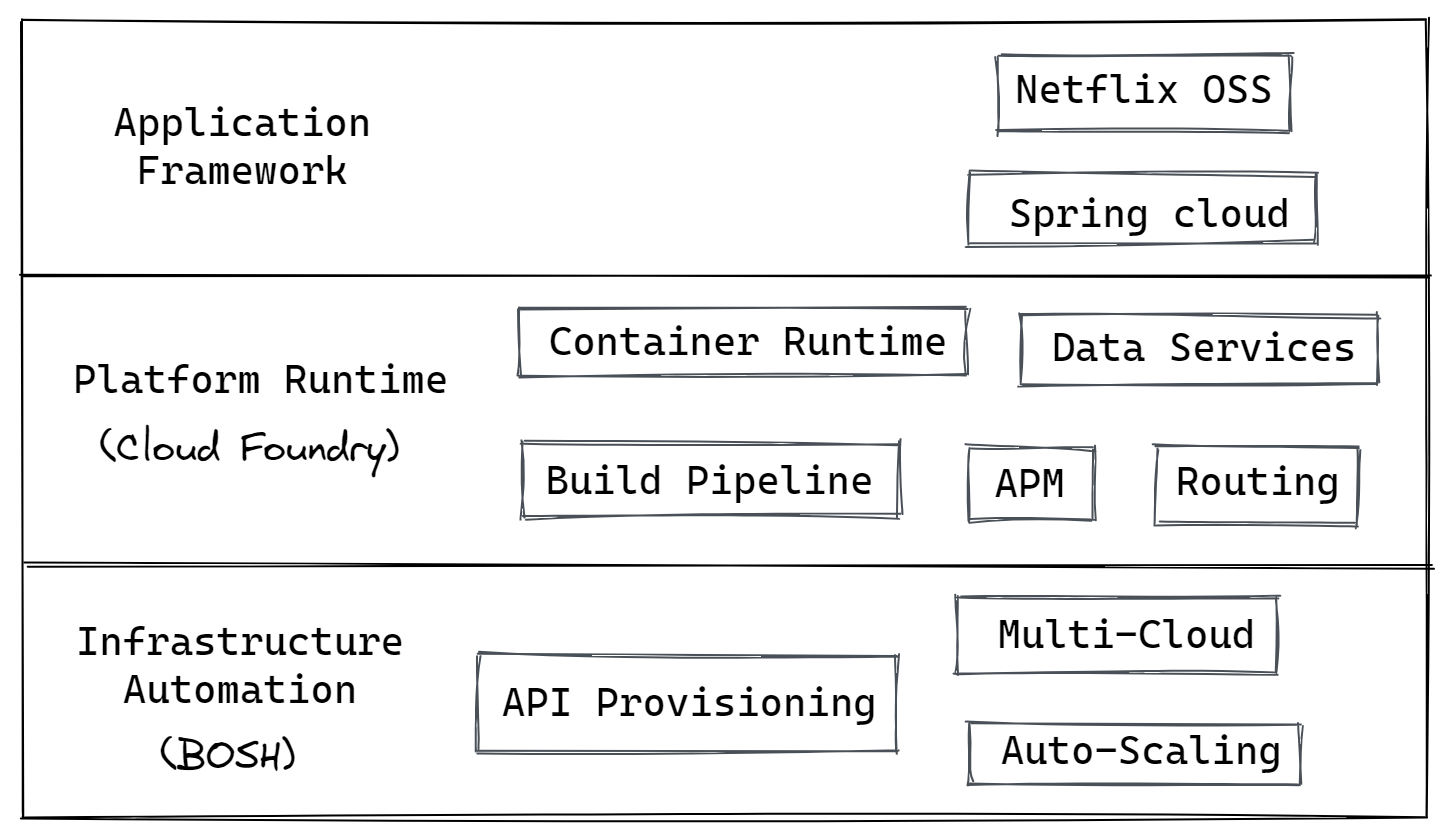
Components of Pivotal Cloud Foundry
Let's look at the Pivotal Cloud Foundry components in more detail.
PCF's primary goal is to provide the underlying infrastructure and environments that enterprises require to provide continuous software delivery, manage the application life cycle, and streamline the development, deployment, and scaling of web-based applications. Pivotal Cloud Foundry is a distributed system with a variety of components that each play a unique role in the process:
BOSH
BOSH is a deployment management tool for Cloud Foundry that can also be used to deploy a Kubernetes cluster outside of the platform. This application connects Pivotal Cloud Foundry to a specific IaaS platform, allowing PCF to operate in any cloud environment.
BOSH precisely maps resources between Pivotal Cloud Foundry and the IaaS provider using IaaS-specific cloud configurations and the PCF baseline deployment configuration.
Ops Manager
In IaaS environments, the Ops Manager is a web-based graphical interface that helps with task automation and PCF deployment. Additional features, such as monitoring solutions, are available in Ops Manager and can be imported and configured before deployment.
User Account and Authentication (UAA) Server
On the server, the UAA component of PCF manages identity and access management. This utility lets PCF admins establish, manage, and configure user accounts, as well as manage roles-based access and generate authentication tokens for client applications.
The Gorouter
PCF handles incoming requests or commands from operators or developers using Gorouter, which is developed in the Go programming language. Requests can be made directly from users or the Cloud Controller API to applications running on the PCF deployment, depending on the source. To keep track of application instances and perform load balancing, Gorouter connects with Diego.
The Cloud Controller
Developers and operators can send commands to PCF and its deployed applications through the Cloud Controller, which centralizes API endpoints. This contains a wide range of inquiries and requests, such as staging applications, pausing or starting an application, and gathering data on the performance of presently deployed applications.
Loggregator
PCF's Loggregator collects and transmits log and event files, as well as metrics, from all of PCF's infrastructure components and any installed applications. The PCF Firehose combines all of these logs into a single data stream.
Diego
For Pivotal Cloud Foundry deployments, Diego is the container orchestration system. Diego uses three key components to orchestrate the deployment of containers within PCF:
- Incoming requests are received by Diego Brain, who assigns them to cells and schedules them for execution.
- Diego Cells are container-based virtual machines. Containers are memory and virtual core allocations that can be used to execute a task.
- Database VM is a real-time database that tracks new requests, keeps the information about previous requests, and changes the status of completed requests.
Benefits of Pivotal Cloud Foundry
Aside from the option to utilize your preferred cloud platform, PCF provides various advantages to businesses. The following are some of them:
- Iteration of development more quickly
- IT Operations Management (ITOM) has improved efficiency
- Application portability is simple
- Increased developer productivity
- Availability is high
- Application-based health management
- Platform administration from a central location
- Use of the cloud platform without a hitch
- Routing that changes on the fly
- Increased time-to-market
Associations may increase the speed and efficiency with which they run, deploy, and build software with Pivotal Cloud Foundry designer. Pivotal Cloud Foundry accelerates software delivery and enables scaling a hidden application framework with a growing user base straightforward.
Pivotal Cloud Foundry is highly automated, easy to set up, and operates on any private or public cloud, allowing organizations to grow and pick their applications across infrastructure targets.
Conclusion
Organizations can increase the efficiency and speed with which they develop, deploy, and run the software by using Pivotal Cloud Foundry (PCF). With a growing user base, PCF accelerates software delivery and makes it simple to increase the underlying application infrastructure.
PCF is highly automated, simple to set up, and operates on any public or private cloud, allowing enterprises to run and grow their applications across infrastructure targets.
Also Read:
Containers-as-a-Service (CaaS)
Monitor Your Entire Application with Atatus
Atatus is a Full Stack Observability Platform that lets you review problems as if they happened in your application. Instead of guessing why errors happen or asking users for screenshots and log dumps, Atatus lets you replay the session to quickly understand what went wrong.
We offer Application Performance Monitoring, Real User Monitoring, Server Monitoring, Logs Monitoring, Synthetic Monitoring, Uptime Monitoring, and API Analytics. It works perfectly with any application, regardless of framework, and has plugins.

Atatus can be beneficial to your business, which provides a comprehensive view of your application, including how it works, where performance bottlenecks exist, which users are most impacted, and which errors break your code for your frontend, backend, and infrastructure.
If you are not yet a Atatus customer, you can sign up for a 14-day free trial .

